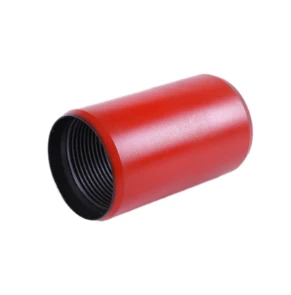- Afrikaans
- Albanian
- Amharic
- Arabic
- Armenian
- Azerbaijani
- Basque
- Belarusian
- Bengali
- Bosnian
- Bulgarian
- Catalan
- Cebuano
- Corsican
- Croatian
- Czech
- Danish
- Dutch
- English
- Esperanto
- Estonian
- Finnish
- French
- Frisian
- Galician
- Georgian
- German
- Greek
- Gujarati
- Haitian Creole
- hausa
- hawaiian
- Hebrew
- Hindi
- Miao
- Hungarian
- Icelandic
- igbo
- Indonesian
- irish
- Italian
- Japanese
- Javanese
- Kannada
- kazakh
- Khmer
- Rwandese
- Korean
- Kurdish
- Kyrgyz
- Lao
- Latin
- Latvian
- Lithuanian
- Luxembourgish
- Macedonian
- Malgashi
- Malay
- Malayalam
- Maltese
- Maori
- Marathi
- Mongolian
- Myanmar
- Nepali
- Norwegian
- Norwegian
- Occitan
- Pashto
- Persian
- Polish
- Portuguese
- Punjabi
- Romanian
- Russian
- Samoan
- Scottish Gaelic
- Serbian
- Sesotho
- Shona
- Sindhi
- Sinhala
- Slovak
- Slovenian
- Somali
- Spanish
- Sundanese
- Swahili
- Swedish
- Tagalog
- Tajik
- Tamil
- Tatar
- Telugu
- Thai
- Turkish
- Turkmen
- Ukrainian
- Urdu
- Uighur
- Uzbek
- Vietnamese
- Welsh
- Bantu
- Yiddish
- Yoruba
- Zulu
what is a pup joint
Understanding Pup Joints Essential Components in Oil and Gas Drilling
In the intricate world of oil and gas drilling, understanding various components and their functions is crucial for any professional within the industry. One such component is the pup joint, a relatively simple yet indispensable element of drilling rigs. This article aims to delve into what a pup joint is, its applications, and why it holds significance in drilling operations.
What is a Pup Joint?
A pup joint is a short length of pipe used in the oil and gas industry, primarily in the drilling process. Typically, it ranges from a few inches to several feet in length and is designed to adjust the length of a drill string or other piping systems. Pup joints are crucial for making connections that allow flexibility in achieving the desired depth and reach of drilling operations.
These joints can be made from various materials, primarily steel, which provides the necessary strength and durability required to withstand high-pressure conditions encountered during drilling activities. The ends of pup joints are usually equipped with threaded connections, which facilitate easy joining and detaching from other components of the drill string.
Applications of Pup Joints
Pup joints serve multiple important roles in drilling operations
1. Length Adjustment One of the primary functions of a pup joint is to provide the necessary length adjustment in a drill string. When the drilling depth needs to be adjusted, pup joints can be added or removed to modify the overall length of the string. This flexibility helps in accommodating various drilling scenarios without necessitating complete reconfiguration of the drill setup.
2. Pressure Regulation Drilling operations often occur under varying pressure conditions. Pup joints help manage these pressures by providing a means to optimize drill string configurations. These joints can absorb excess pressure and help mitigate potential failures within the system.
what is a pup joint

3. Connection Versatility In addition to length adjustment, pup joints can connect different sections of pipe. This application makes them versatile tools in the rig, as they can link various diameters and types of pipes to ensure seamless operation.
4. Repair and Maintenance During maintenance or repair operations, pup joints can be employed to replace damaged sections of the drill string without the need for extensive rebuilding. This capability minimizes downtime and enhances operation efficiency.
Importance in Drilling Operations
The importance of pup joints in drilling cannot be overstated. These components play a critical role in ensuring that drilling operations run smoothly and efficiently. Their ability to provide precise length adjustments, connect different types of pipes, and withstand high pressures is essential for maintaining drilling integrity.
Moreover, the use of pup joints can lead to significant cost savings. By facilitating repairs without major overhauls of the drill string, companies can avoid the high costs associated with equipment replacement and reduce idle time for rigs.
Additionally, pup joints are vital for safety. Properly utilizing these joints ensures that the entire drilling assembly operates under optimal conditions. When the drill string is configured correctly, the risks of equipment failure and accidents are significantly minimized.
Conclusion
In summary, a pup joint is a fundamental component in the drilling process that contributes to the overall efficiency, safety, and effectiveness of oil and gas extraction operations. By understanding the significance and functionality of pup joints, industry professionals can better appreciate their role in drilling technology and operations. As the oil and gas sector continues to evolve, the importance of such components cannot be overlooked, as they form the backbone of successful drilling initiatives. In recognizing the intricate interplay of various tools and technologies, one can improve not just operational efficiency, but also contribute to advancing industry standards and practices.
-
Tubing Pup Joints: Essential Components for Oil and Gas OperationsNewsJul.10,2025
-
Pup Joints: Essential Components for Reliable Drilling OperationsNewsJul.10,2025
-
Pipe Couplings: Connecting Your World EfficientlyNewsJul.10,2025
-
Mastering Oilfield Operations with Quality Tubing and CasingNewsJul.10,2025
-
High-Quality Casing Couplings for Every NeedNewsJul.10,2025
-
Boost Your Drilling Efficiency with Premium Crossover Tools & Seating NipplesNewsJul.10,2025







